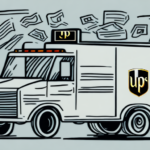Streamline Your Freight Payments with Automation
Freight payments have always been a complex issue for businesses involved in logistics. The process of manually managing freight payments is time-consuming, error-prone, and can lead to costly mistakes that impact your bottom line. Fortunately, automation has revolutionized the freight payment landscape, providing businesses with a powerful tool for streamlining the process and optimizing efficiency. In this article, we will delve into the benefits of automating your freight payments, the challenges you may face in implementing automation, and offer tips for maximizing cost savings with automated freight payments.
Transforming Freight Payments Through Automation
Automation has transformed the freight payment landscape by providing businesses with a more efficient and accurate way to manage their logistics costs. According to a McKinsey report, companies that implement automated payment systems see a reduction in processing times by up to 50%, eliminating errors, and significantly reducing administrative tasks.
With automated freight payment systems, businesses can process invoices faster, eliminate errors, and reduce administrative time. Additionally, automation enables businesses to gain greater visibility into their supply chain, including tracking shipments and analyzing transportation costs, leading to better decision-making and cost savings.
Another benefit of automation in freight payment is the ability to detect and prevent fraudulent activities. Automated systems can flag suspicious transactions and alert businesses to potential fraud, reducing the risk of financial loss. This is especially important in the freight industry, where the high volume of transactions and complex supply chain networks can make it difficult to identify fraudulent activities.
Furthermore, automation in freight payment can also improve relationships between businesses and their logistics providers. By streamlining the payment process and providing real-time visibility into payment status, businesses can build trust and strengthen partnerships with their logistics providers. This can lead to better service levels, improved communication, and ultimately, increased customer satisfaction.
Benefits of Automating Freight Payments
- Reduction of Manual Errors: Automated systems use algorithms to calculate and pay invoices, reducing instances of overpayments or duplicate payments.
- Improved Payment Accuracy: Automation enhances the accuracy of payments and minimizes billing disputes with carriers.
- Cost Savings: Reducing processing costs through automation leads to significant savings over time.
- Enhanced Communication: Providing carriers with real-time payment updates fosters better business relationships and faster problem resolution.
- Data Tracking and Analysis: Automated systems allow easy access to payment data, enabling businesses to identify trends and make informed decisions.
Additionally, automated freight payments provide businesses with greater visibility into their payment processes, allowing them to monitor payment status and identify potential issues before they become problems.
Addressing Challenges in Freight Payments with Automation
Managing freight payments manually presents several challenges such as inaccurate invoices, lengthy processing times, and limited visibility into the supply chain. Automation can help businesses overcome these hurdles by providing an efficient and streamlined freight payment process.
Improving Invoice Accuracy
Automation improves invoice accuracy through systems that automatically match invoices to carrier quotes, reducing potential discrepancies. This leads to cost savings and greater operational efficiency.
Reducing Processing Times
By automating the invoice and payment process, businesses can significantly cut down processing times, leading to faster payments and improved cash flow management.
Simplifying Complex Processes
Freight payments often involve multiple parties, including carriers, shippers, and third-party logistics providers. Automation provides a centralized platform for managing all aspects of freight payments, simplifying the process.
Moreover, automation offers greater visibility into the supply chain, allowing businesses to track shipments in real-time and identify potential issues proactively.
Selecting and Implementing Freight Payment Automation Solutions
Choosing the Right Solution
Selecting the appropriate freight payment automation solution is critical to the success of your business. Key factors to consider include:
- Payment Processing Fees: Compare the fees associated with different solutions to ensure cost-effectiveness.
- Data Integration Capabilities: Ensure the solution can seamlessly integrate with your existing systems such as ERP and TMS.
- Security Features: Look for solutions that offer robust security measures like encryption and multi-factor authentication.
- Customer Support: Opt for providers that offer reliable customer service and support.
According to Gartner, companies that conduct thorough research and choose solutions that align with their specific needs are more likely to achieve successful implementation and realize substantial benefits.
Implementing the System Successfully
Successful implementation of an automated freight payment system involves a structured approach:
- Select the Right Provider: Based on your business needs and the factors mentioned above.
- Prepare and Cleanse Data: Ensure your data is accurate and organized before migration.
- Test the System: Conduct thorough testing to identify and resolve any issues.
- Train Employees: Provide comprehensive training to ensure staff are familiar with the new system.
- Establish Performance Metrics: Monitor the system’s effectiveness and ensure it meets business needs.
Integration with existing systems such as accounting software and transportation management systems is also crucial for maximizing efficiency and reducing manual data entry.
Leveraging Technology for Streamlined Freight Payments
Technology plays a pivotal role in streamlining freight payments. Advancements in machine learning, predictive analytics, and cloud-based solutions have enabled businesses to manage their supply chains more efficiently and accurately.
Real-Time Shipment Tracking
With technology-enhanced systems, businesses can track and monitor shipments in real-time. This allows for the swift identification of issues or delays, enabling corrective actions to minimize disruptions.
Automated Invoicing and Payment
Technology facilitates the automation of invoicing and payment processes, reducing the risk of errors and delays, and ensuring timely payments to carriers.
Data Analytics for Informed Decisions
By collecting and analyzing data on shipping times, costs, and other key metrics, businesses can identify areas for improvement and make data-driven decisions to optimize logistics operations. This leads to significant cost savings and enhanced customer satisfaction.
Future Trends and Case Studies in Freight Payment Automation
Emerging Technologies
The future of freight payments is closely tied to the development of new technologies such as Artificial Intelligence (AI), Blockchain, and advanced predictive analytics. These technologies are expected to further enhance the efficiency and security of freight payment systems.
Case Studies
Numerous businesses have successfully implemented automated freight payment systems, yielding substantial benefits. For instance, a major retailer reduced invoice processing times by 30%, while a food produce company improved payment accuracy and minimized the risk of overbilling through automation. These real-life examples demonstrate the tangible advantages of adopting automated freight payment solutions.
Conclusion
Freight payments are a complex aspect of logistics management, but automation offers a robust solution for streamlining the process. Automated freight payment systems enhance invoice accuracy, reduce processing times and costs, provide greater visibility and control over the supply chain, and offer a competitive advantage in the industry. While there may be challenges in adopting automation, overcoming these hurdles will lead to significant benefits, positioning your business for growth and innovation in the future.






















